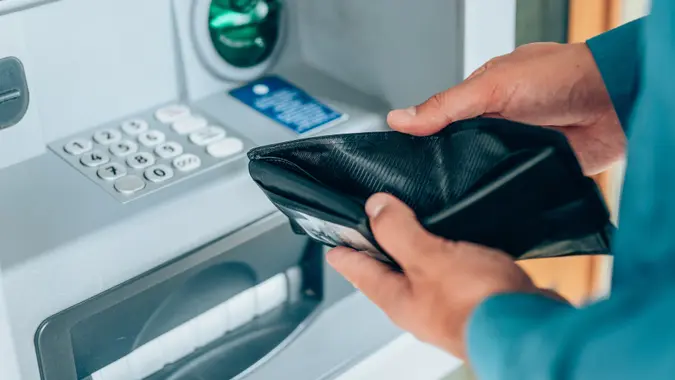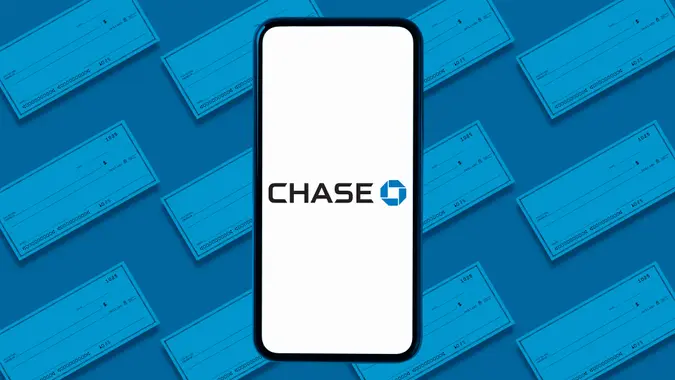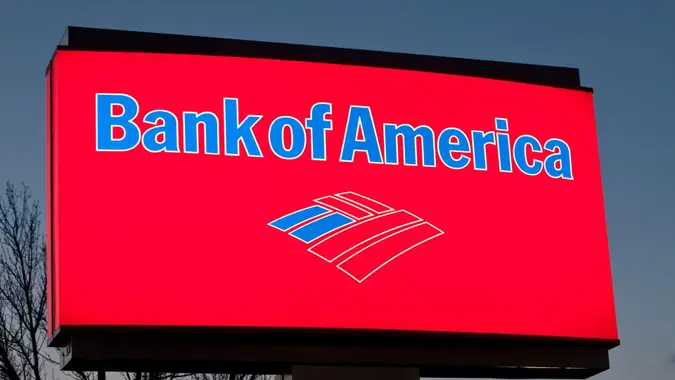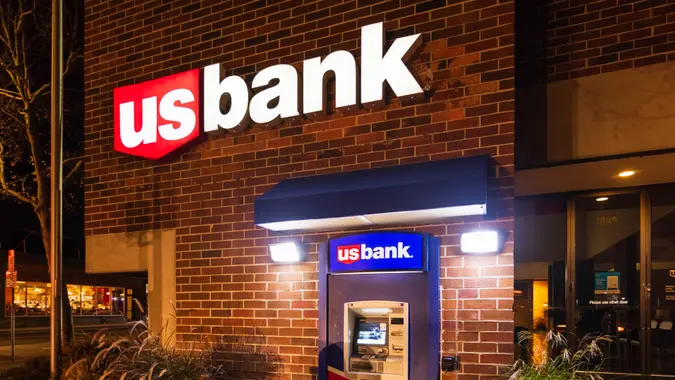Advertiser Disclosure
GOBankingRates works with many financial advertisers to showcase their products and services to our audiences. These brands compensate us to advertise their products in ads across our site. This compensation may impact how and where products appear on this site. We are not a comparison-tool and these offers do not represent all available deposit, investment, loan or credit products.
6 Things To Do Now If You Have More Than $5,000 in Your Checking Account
 Written by
Andrew Lisa
Written by
Andrew Lisa
 Edited by
Chris Cluff
Edited by
Chris Cluff

Commitment to Our Readers
GOBankingRates' editorial team is committed to bringing you unbiased reviews and information. We use data-driven methodologies to evaluate financial products and services - our reviews and ratings are not influenced by advertisers. You can read more about our editorial guidelines and our products and services review methodology.

20 YearsHelping You Live Richer

Reviewed by Experts

Trusted by Millions of Readers
A recent GOBankingRates survey showed that 9 out of 10 people have a checking account. But despite the familiarity, the question of how much cash one should have in an account remains a personal finance mystery for many.
“I’ve had many clients ask about how much cash they should keep liquid vs. how much they should invest in the markets for a better rate of return,” said Charles Claver, senior vice president and director of investment management and trust for First Bank. Claver says the right amount is “typically very personal depending on the client and his or her financial situation.”
That’s undoubtedly true, but once you hit $5,000, is it possible that at least some of the cash in your checking account might be able to work harder for you elsewhere?
Here are six options to consider:
If Your Monthly Expenses Are Around $5K, Do Nothing
Start by asking how $5,000 breaks down in terms of monthly spending.
“Everyday checking is for your bills and expenses,” Claver said. “Basically, the funds that are frequently coming in and out.”
Northwestern Mutual recommends keeping about a month’s worth of take-home pay in your checking account to give yourself a 30-day cushion. Excess money languishing in checking can serve you better elsewhere, but cutting it too close is dangerous.
Checking account activity is frequent and consistent — subscriptions and other recurring payments, cash withdrawals, direct deposits, BNPL transactions, etc. So if your monthly spend is around $5,000 and that’s what you have in checking, stay put.
But if you spend less or have more, congratulations — you’ve outgrown your checking account by living within your means.
Purchase Financial Security by Funding a Savings Account
The GOBankingRates survey showed that about 50% of the population has no emergency savings. If you have money to spare in checking, wave goodbye to the half that’s living check to check and join the half that isn’t by moving the excess to a federally insured savings account — the highest yields are currently over 4%.
“These are funds for short-term emergencies and contingency,” Claver said.
Your instinct might be to pay down debt first, but without a modest emergency fund, the broken window or dead alternator’s always just around the corner will send you right back to your credit cards before you’ve even finished paying them off.
Now It’s Time To Deal With Debt — Maybe
You were right to prioritize debt, but according to Fidelity, eliminating it comes in second behind an emergency fund only if you’re paying at least 6% interest.
Most loans cost more than that today, but if you locked in a lower rate when money was still cheap, keep kicking that can down the road. Instead, your checking surplus would be of more use in a brokerage account.
Congratulations, You’re About To Become an Investor
The reason for the 6% rule is that sound investments can earn at least that much over time, which means your gains can outpace the interest you’re paying on your debt.
“Long-term funds should be invested in a balanced, diversified portfolio for long-term appreciation,” Claver said.
Always go for an employer’s 401(k) match first, but if that’s not an option, open a no-fee brokerage account that allows fractional-share trading so you can start small with whatever you have and make every dollar count.
Graduate to New Opportunities
The balanced, diversified portfolio that Claver envisions will look different for everybody. Most experts counsel newbies to use dollar-cost averaging to buy partial shares of an index ETF consistently over time and stick with it for the long haul.
That’s timeless advice, but while your starter investments are (hopefully) appreciating, learn as much as you can about how to diversify your holdings when your checking account starts to bulge once more, including:
- Real estate, including physical properties, REITS and crowdfunding
- Precious metals
- P2P lending
- Bonds and other debt instruments
- Tangible assets like art and wine
- Cryptocurrency and other digital assets
- Income-generating investments like annuities
Spread the Wealth to New Accounts
Now that you’ve expanded your holdings beyond checking to include a savings and brokerage account, consider how you might get even more from your money by stashing some cash in tax-advantaged accounts with special privileges. Roth IRAs are one of the most versatile options.
Unlike traditional IRAs and 401(k)s, you fund Roth IRAs with after-tax income. Since the IRS already took its bite, you can make tax-free withdrawals later — any gains you earn over time are tax-exempt, too. You can contribute until any age, there are no required minimum distributions and your heirs don’t have to pay taxes on Roth IRAs you leave as an inheritance.
Also consider a health savings account (HSA), which lets people with qualifying high-deductible insurance plans save money with a unique triple tax advantage. Your money goes into an HSA untaxed, gains on your investments are untaxed and you can make withdrawals for qualified medical expenses — both now and in retirement — without ever giving a dime to the IRS.
Share This Article:




You May Also Like







- Free Checking Accounts with No Minimum Balance
- Free Checking Accounts with No Minimum Deposit
- Best Checking Account Bonuses
Learn More About Checking Accounts
- What is a Checking Account
- Types of Checking Accounts
- Checking Accounts vs Savings Accounts
- How Many Checking Accounts Should I Have
- How Much Money Should I Keep In My Checking Account
- How to Open a Checking Account
- How to Write a Check
GOBankingRates' Best Banks
Make your money work for you
Get the latest news on investing, money, and more with our free newsletter.
By subscribing, you agree to our Terms of Use and Privacy Policy. Unsubscribe at any time.


Thanks!
You're now subscribed to our newsletter.
Check your inbox for more details.



Sending you timely financial stories that you can bank on.
Sign up for our daily newsletter for the latest financial news and trending topics.
For our full Privacy Policy, click here.
Looks like you're using an adblocker
Please disable your adblocker to enjoy the optimal web experience and access the quality content you appreciate from GOBankingRates.
- AdBlock / uBlock / Brave
- Click the ad blocker extension icon to the right of the address bar
- Disable on this site
- Refresh the page
- Firefox / Edge / DuckDuckGo
- Click on the icon to the left of the address bar
- Disable Tracking Protection
- Refresh the page
- Ghostery
- Click the blue ghost icon to the right of the address bar
- Disable Ad-Blocking, Anti-Tracking, and Never-Consent
- Refresh the page









